Text

a sweet-faced pied harvestman, Libitoides sayii
#had to read that three times#first I read sweetie pie harvestman#then I read pie faced as in pumpkin pie lookin ass#then I finally read the real name#all apply tbh#arachnids
659 notes
·
View notes
Text

Scientists' warning to humanity on insect extinctions
by University of Huddersfield
Some of the tiniest creatures on the planet are vital for the environment.
But there is a worldwide fall in insect numbers after an accelerating rate of extinction.
Now, a global group of 30 scientists—including University of Huddersfield lecturer Dr. Matt Hill—has highlighted the issue and suggests practical steps that everyone can take to help halt the decline.
These include mowing lawns less often, avoiding pesticides and leaving old trees, stumps and dead leaves alone...
Read more: https://phys.org/news/2020-04-scientists-humanity-insect-extinctions.html
492 notes
·
View notes
Text

You might know this tiny frog.
This is Mini mum (photo by Andolalao Rakotoarison), a species I had the pleasure to name—together with a team of amazing colleagues—back in 2019.
That was the start of a fascination with the process and consequences of miniaturisation for vertebrates. How the hell does this tiny frog manage to fit all of its vital organs—more or less all the same senses and organs that we have—into a package the size of a tic-tac‽ Why and how has it evolved to be so small? And why don't we get frogs that are much smaller?
Well, I just secured 1.5 MILLION Euros (!!!) in the form of a European Research Commission Starting Grant, to answer these and other related questions in the genomes of Mini frogs and other miniaturised vertebrates.
Because it turns out, there are *lots* of miniaturised vertebrates, and they push the boundaries of how small we think it is possible for a vertebrate to be! Here is a little graphic of some of them, scaled to a BIC ballpoint pen.
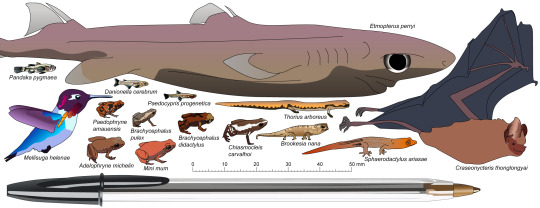
The project is called GEMINI: The Genomics of Miniaturisation in Vertebrates! You can read more about it on my website here, and in the press release, here!

8K notes
·
View notes
Text
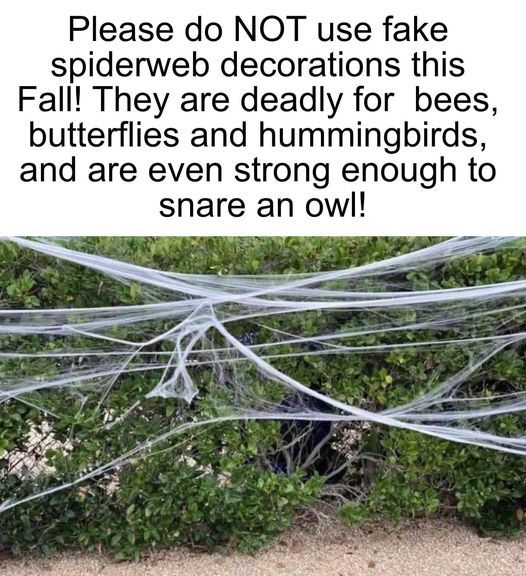
All of my friends that work at wildlife rehab centers have had to untangle animals from this stuff, or had animals brought in that died in it. This is especially nasty for small owl species.
#owls are notoriously bad at not getting trapped in nets#fake cobwebs are just a death trap for anything with wings#and some without
25K notes
·
View notes
Text
Y'all I know that when so-called AI generates ridiculous results it's hilarious and I find it as funny as the next guy but I NEED y'all to remember that every single time an AI answer is generated it uses 5x as much energy as a conventional websearch and burns through 10 ml of water. FOR EVERY ANSWER. Each big llm is equal to 300,000 kiligrams of carbon dioxide emissions.
LLMs are killing the environment, and when we generate answers for the lolz we're still contributing to it.
Stop using it. Stop using it for a.n.y.t.h.i.n.g. We need to kill it.
Sources:
59K notes
·
View notes
Text
The way people demonize seagulls is actually unreal. Almost all of their natural habitat has been destroyed (almost all coastal areas have been developed, destroying natural sand dune ecosystems) and they're doing their best to adapt. They're literally just trying to survive. You're in their home. The vitriol some people have for these gorgeous sea birds just because they're not shy about snatching food if you're not cautious is insane

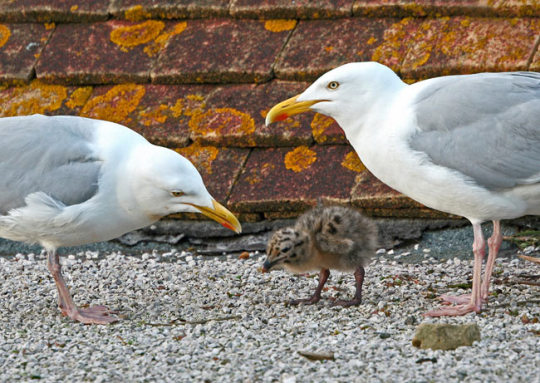
#it’s crazy how much people hate the animals that adapt to live alongside us#while loving the ones that don’t like to be around us
38K notes
·
View notes
Text

Extremely good paragraph from an article exploring the concept of sentience in invertebrates
16K notes
·
View notes
Text

Where you can, please leave the leaves.
They are filled with life and the nutrients of the next years!
In these leaves there are future pollinators and lightning bugs which need two years in leaf litter to mature to the adult form we love to see.
Do a bit less work, and let nature guide your yard set up.
Where leaves naturally collect, spread more there, if it is an area you may want to garden native plants later.
That leaf litter alone can start you on your way to having a unique pocket prairie, where you let more of your lawn fade into native shortgrass prairie in sunny areas, and woodland emergent in shady areas.
Consider leaving the leaves, and maybe, if you can, leave them off the street.
4K notes
·
View notes
Text
On a quest to find Tumblr’s favorite animal!
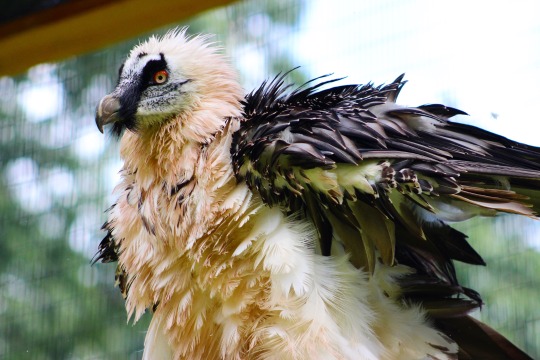
(Pictured is my personal favorite animal: the bearded vulture! Photo was taken by me… if you want to see more I post my photography on my instagram: SaritaWolf ;P)
Ever wondered how your favorite animal stacks up against other people’s favorites? Well you’ve come to the right place!
Here’s how this will work…
Polls will be ranked like so:
My fav is in this group!/This is one of my favorite animals!
I love these/this animal(s)
I like these/this animal(s)
I am neutral about these/this animal(s)
I dislike these/this animal(s)
I hate these/this animal(s)
If an animal is your favorite, it receives 5 points
If you love an animal, it receives 3 points
If you like an animal, it receives 1 point
If you are neutral about an animal, no points are added or subtracted to its ranking
If you dislike an animal, 1 point will be taken away
If you hate an animal, 3 points will be taken away
At the end of a polling period, that animal’s points will be its rank.
The top 20 or 50 or 100 or whatever (number to be decided on at a later date) will move on to the next round!
Polls will be open for 7 days
Since it’s not very feasible for me to make 1.5 million polls for every known species of animal, the first round of polls will be by Order.
If you want your favs to make it to the top, make sure you know what Order they’re in! This can be found via a quick Wikipedia search and a look-see right here (using the bearded vulture as an example):
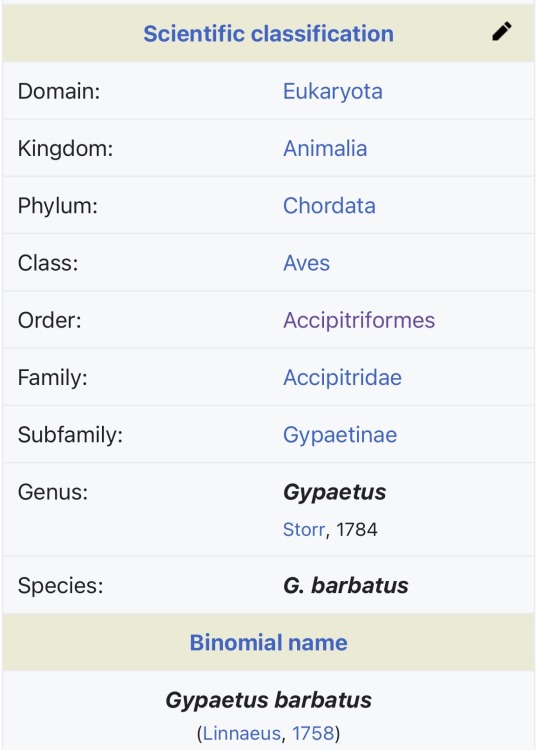
The Bearded Vulture is an Accipitriform!
The top ranked orders will move on to the next round, where they will then be split into Families, and Round 2 will begin.
Round 3 will take the winning families and split them by Genus, then follow the same pattern.
Round 4 will take the winning genera and split them by Species, then follow the same pattern.
The ultimate round, Round 5, will pit the top 20/50/100 (number also to be decided at a later date) species against each other.
If no clear photos exist of a species, it will not be included in the polls. (So, if you’re a scientist who just discovered a new moth and it’s your favorite animal you better get those photos on iNaturalist quick)
You can have multiple favorites, I am not keeping track of that, but I do ask that you answer honestly!
I will add a bit of propaganda under a cut on each poll, but please feel free to reblog polls and add your own! If you want your fav(s) to win, these polls need to be seen by lots of people!
I do encourage people to not vote blindly. Look at the photos, read the propaganda, maybe even do your own research before you decide how you feel about an animal!
And lastly, please keep things civil! We all have different tastes and someone hating your fav is not a personal affront against you!
That being said, we do not “Kill it with fire” here. It’s ok to not like an animal, but we do not tolerate people calling for violence against a species or wishing a whole species extinct.
Important Tags:
#Animal Polls: All main polls
#Special Poll: Any extra polls
#Statistics: A stats post will be posted after each round
#Asks: for any responses to asks (my askbox is open!)
#FAQ: for questions that may come up often
#Extras: for any extra posts or reblogs (I may want to infodump about my favs ¯\_(ツ)_/¯. I may also reblog other peoples’ propaganda!)
Round 1 will start September 1st!
331 notes
·
View notes
Text
'She is so old': One-eyed wolf in Yellowstone defies odds by having 10th litter of pups in 11 years
By Patrick Pester, published June 3, 2024
Wolf 907F recently gave birth to her 10th litter of pups, which researchers say is likely a Yellowstone National Park record.

Wolf 907F walking past a trail camera in Yellowstone National Park. (Image credit: Yellowstone Wolf and Cougar Project)
The alpha female of a Yellowstone gray-wolf pack has defied the odds by having a 10th litter of pups at the age of 11.
The one-eyed wolf elder, named Wolf 907F, gave birth to her latest litter last month, the Cowboy State Daily reported. Gray wolves (Canis lupus) have an average life span of three to four years, so it's rare for them to reach 11, let alone have pups at that age.
Wolf 907F has given birth to pups every year for a decade straight since she became sexually mature, which Kira Cassidy, a research associate at the Yellowstone Wolf Project, said is likely a record for the wolves of Yellowstone National Park.

At age 11, Yellowstone’s Wolf 907F has lived more than twice a wild wolf’s average life expectancy. In this photo from April, she was pregnant with a litter of pups that she’s since given birth to. (Courtesy Yellowstone Wildlife Project)
"Every day, I expect that she might die just because she is so elderly, but I've been thinking that for the last few years, and she keeps going," Cassidy told Live Science.
Cassidy has calculated that only about 1 in 250 wolves in Yellowstone make it to their 11th birthday, with just six recorded examples since wolves were reintroduced to the park in 1995. The oldest of all of these great elders lived to 12.5 years, according to the National Park Service.
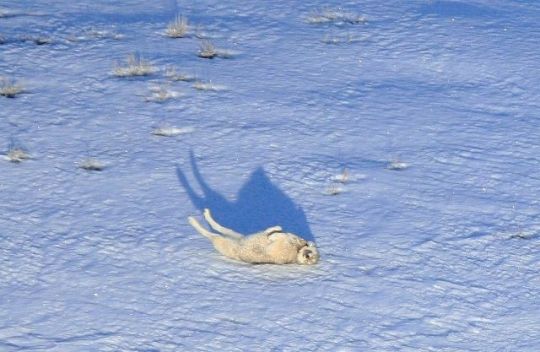
Wolf 907F lies in the snow in Yellowstone in 2015. (Image credit: Kira Cassidy/NPS)
Wolf 907F is the oldest wolf to have lived her whole life in the park's Northern Range, where there is more prey but also more competition from other wolves. Wolves rarely die of old age in the wild, and in Yellowstone National Park, the biggest threat is other wolves.
"In a protected place like Yellowstone, their number-one cause of death is when two packs fight with each other," Cassidy said. "That accounts for about half of the mortality."
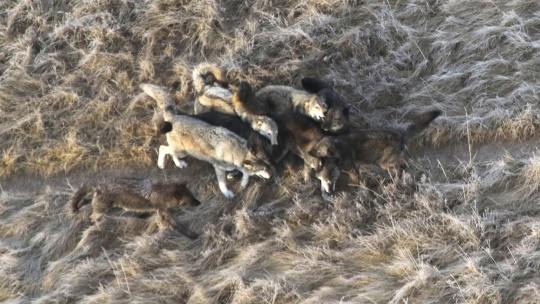
One of Yellowstone's oldest wolves, Wolf 907F is pictured here with her pack last year. She's the gray collared wolf on the lower left. (Courtesy Yellowstone Wildlife Project)
Wolf 907F is the alpha female of the Junction Butte pack, which has between 10 and 35 members at any given time. Cassidy noted that this is a large pack — the average wolf pack size is about 12 individuals — and that reduces the risk of being killed in territorial fights. Wolf 907F's experience also gives her pack an edge.
"Packs that have elderly wolves are much more successful in those pack-versus-pack conflicts because of the accumulated knowledge and the experience that they bring to that really stressful situation," Cassidy said.
Wolf 907F has likely boosted her pack's survival chances outside of battle, too. Cassidy noted that the Junction Butte pack rarely leaves Yellowstone's border and that Wolf 907F is "savvy" when it comes to things like crossing roads and avoiding humans.
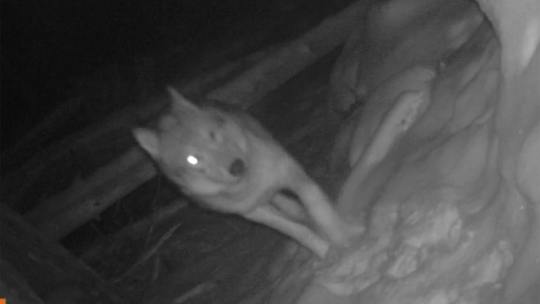
Wolf 907F, Yellowstone's aging matriarch at 11 years old, only has one eye. She's the fourth wolf to pass by this trail cam. (Courtesy Yellowstone Wildlife Project)
What makes Wolf 907F even more impressive is that she does all of this with only one functioning eye. Researchers aren't sure what happened, but her left eye has been small and sunken since before she turned 4. "You would never know [when] watching her," Cassidy said.
Like other elders, Wolf 907F takes a back seat in hunts now that she's older, and she spends most of her day hanging around with the pack's pups. Cassidy and her colleagues have counted three pups in her current litter, which is smaller than the average litter size of four to five but not surprising. A 2012 study of Yellowstone wolves published in the Journal of Animal Ecology found that litter size declines with age.
"The fact that 907 is still having pups is amazing, and her litter being small is expected given that she is so old," Cassidy said.
A few of Wolf 907F's offspring now lead packs of their own, but most of her pups never reach adulthood due to the perilous nature of being a wolf. However, Wolf 907F and the others in the park don't seem to live like death is on their mind.
"They are happy to be with their family going from day to day," Cassidy said. "Even if they have injuries or are missing an eye or something really stressful is going on in their life, they move through that stress and go back to seemingly really enjoying their life."

At age 11, Yellowstone's Wolf 907F - the gray wolf in the center of this photo from 2020- has lived more than double the typical lifespan of wolves in the wild. (Courtesy Yellowstone Wildlife Project)
29K notes
·
View notes
Text
average United States contains 1000s of pet tigers in backyards" factoid actualy [sic] just statistical error. average person has 0 tigers on property. Activist Georg, who lives the U.S. Capitol & makes up over 10,000 each day, has purposefully been spreading disinformation adn [sic] should not have been counted
I have a big mad today, folks. It's a really frustrating one, because years worth of work has been validated... but the reason for that fucking sucks.
For almost a decade, I've been trying to fact-check the claim that there "are 10,000 to 20,000 pet tigers/big cats in backyards in the United States." I talked to zoo, sanctuary, and private cat people; I looked at legislation, regulation, attack/death/escape incident rates; I read everything I could get my hands on. None of it made sense. None of it lined up. I couldn't find data supporting anything like the population of pet cats being alleged to exist. Some of you might remember the series I published on those findings from 2018 or so under the hashtag #CrouchingTigerHiddenData. I've continued to work on it in the six years since, including publishing a peer reviewed study that counted all the non-pet big cats in the US (because even though they're regulated, apparently nobody bothered to keep track of those either).
I spent years of my life obsessing over that statistic because it was being used to push for new federal legislation that, while well intentioned, contained language that would, and has, created real problems for ethical facilities that have big cats. I wrote a comprehensive - 35 page! - analysis of the issues with the then-current version of the Big Cat Public Safety Act in 2020. When the bill was first introduced to Congress in 2013, a lot of groups promoted it by fear mongering: there's so many pet tigers! they could be hidden around every corner! they could escape and attack you! they could come out of nowhere and eat your children!! Tiger King exposed the masses to the idea of "thousands of abused backyard big cats": as a result the messaging around the bill shifted to being welfare-focused, and the law passed in 2022.
The Big Cat Public Safety Act created a registry, and anyone who owned a private cat and wanted to keep it had to join. If they did, they could keep the animal until it passed, as long as they followed certain strictures (no getting more, no public contact, etc). Don’t register and get caught? Cat is seized and major punishment for you. Registering is therefore highly incentivized. That registry closed in June of 2023, and you can now get that registration data via a Freedom of Information Act request.
Guess how many pet big cats were registered in the whole country?
97.
Not tens of thousands. Not thousands. Not even triple digits. 97.
And that isn't even the right number! Ten USDA licensed facilities registered erroneously. That accounts for 55 of 97 animals. Which leaves us with 42 pet big cats, of all species, in the entire country.
Now, I know that not everyone may have registered. There's probably someone living deep in the woods somewhere with their illegal pet cougar, and there's been at least one random person in Texas arrested for trying to sell a cub since the law passed. But - and here's the big thing - even if there are ten times as many hidden cats than people who registered them - that's nowhere near ten thousand animals. Obviously, I had some questions.
Guess what? Turns out, this is because it was never real. That huge number never had data behind it, wasn't likely to be accurate, and the advocacy groups using that statistic to fearmonger and drive their agenda knew it... and didn't see a problem with that.
Allow me to introduce you to an article published last week.
This article is good. (Full disclose, I'm quoted in it). It's comprehensive and fairly written, and they did their due diligence reporting and fact-checking the piece. They talked to a lot of people on all sides of the story.
But thing that really gets me?
Multiple representatives from major advocacy organizations who worked on the Big Cat Publix Safety Act told the reporter that they knew the statistics they were quoting weren't real. And that they don't care. The end justifies the means, the good guys won over the bad guys, that's just how lobbying works after all. They're so blase about it, it makes my stomach hurt. Let me pull some excerpts from the quotes.
"Whatever the true number, nearly everyone in the debate acknowledges a disparity between the actual census and the figures cited by lawmakers. “The 20,000 number is not real,” said Bill Nimmo, founder of Tigers in America. (...) For his part, Nimmo at Tigers in America sees the exaggerated figure as part of the political process. Prior to the passage of the bill, he said, businesses that exhibited and bred big cats juiced the numbers, too. (...) “I’m not justifying the hyperbolic 20,000,” Nimmo said. “In the world of comparing hyperbole, the good guys won this one.”
"Michelle Sinnott, director and counsel for captive animal law enforcement at the PETA Foundation, emphasized that the law accomplished what it was set out to do. (...) Specific numbers are not what really matter, she said: “Whether there’s one big cat in a private home or whether there’s 10,000 big cats in a private home, the underlying problem of industry is still there.”"
I have no problem with a law ending the private ownership of big cats, and with ending cub petting practices. What I do have a problem with is that these organizations purposefully spread disinformation for years in order to push for it. By their own admission, they repeatedly and intentionally promoted false statistics within Congress. For a decade.
No wonder it never made sense. No wonder no matter where I looked, I couldn't figure out how any of these groups got those numbers, why there was never any data to back any of the claims up, why everything I learned seemed to actively contradict it. It was never real. These people decided the truth didn't matter. They knew they had no proof, couldn't verify their shocking numbers... and they decided that was fine, if it achieved the end they wanted.
So members of the public - probably like you, reading this - and legislators who care about big cats and want to see legislation exist to protect them? They got played, got fed false information through a TV show designed to tug at heartstrings, and it got a law through Congress that's causing real problems for ethical captive big cat management. The 20,000 pet cat number was too sexy - too much of a crisis - for anyone to want to look past it and check that the language of the law wouldn't mess things up up for good zoos and sanctuaries. Whoops! At least the "bad guys" lost, right? (The problems are covered somewhat in the article linked, and I'll go into more details in a future post. You can also read my analysis from 2020, linked up top.)
Now, I know. Something something something facts don't matter this much in our post-truth era, stop caring so much, that's just how politics work, etc. I’m sorry, but no. Absolutely not.
Laws that will impact the welfare of living animals must be crafted carefully, thoughtfully, and precisely in order to ensure they achieve their goals without accidental negative impacts. We have a duty of care to ensure that. And in this case, the law also impacts reservoir populations for critically endangered species! We can't get those back if we mess them up. So maybe, just maybe, if legislators hadn't been so focused on all those alleged pet cats, the bill could have been written narrowly and precisely.
But the minutiae of regulatory impacts aren't sexy, and tiger abuse and TV shows about terrible people are. We all got misled, and now we're here, and the animals in good facilities are already paying for it.
I don't have a conclusion. I'm just mad. The public deserves to know the truth about animal legislation they're voting for, and I hope we all call on our legislators in the future to be far more critical of the data they get fed.
7K notes
·
View notes
Text
I’ve mentioned before that for individuals living in some areas, like the United Kingdom, it can be difficult to adopt a cat because cultural norm is to allow the animal to free-roam and your application will be denied if you want to do the responsible, ethical thing and keep them inside…
So I’d like to introduce you all to Bushy Tail Cat Aid in located Bushey, United Kingdom. They are a cat rescue that exclusive adopts their tame cats to indoor homes and are strongly in favor of practicing appropriate pet care by keeping cats indoors.
1K notes
·
View notes
Note
Ok! I will take that as permission for Rat Lore Dumping!

The Rakali (Hydromys chrysogaster) is a semi-aquatic rat native to Australia and is one of Australia’s few native rodents. They fill the same niche as otters!

The Maned Rat (Lophiomys imhausi), native to East Africa, is the only known poisonous rodent. The hairs in their mane are absorbent, and the rat rubs them against the bark of the Poison Arrow Tree to store the plant’s toxins!

The Summit Rat (Rattus baluensis) only lives on Mt. Tambuyukon and Mt. Kinabalu in Borneo and Malaysia. It has a symbiotic relationship with the pitcher plant Nepenthes rajah. The pitcher plant secrets sweet nector from its lid for the rat (as well as for the Mountain Treeshrew) to lap up. In return, the rat defecates in the plant’s trap, providing it with nitrogen. (Unfortunately, sometimes rats will also drown in the trap, but these cases seem to be already sick animals and not the norm, as the pitcher plant primarily feeds on ants.)

The Golden-backed Tree-rat (Mesembriomys macrurus) is another rat that’s native only to Australia. Most mammalian niches in Australia are filled by marsupials, which makes native Australian rats all the more special. They are nocturnal and arboreal, mainly feeding on fruit. They used to range over all of Northern Australia, but are now only found in a few remote, near-coastal areas, having been threatened by bushfires, feral cats, and cattle destroying their habitats and food sources.

The similarily arboreal Acacia Rat (Thallomys paedulcus) relies on acacia trees in Sub-saharan Africa, living underneath their frayed bark. The thorns of the acacias provide protection from predators.

The Northern Luzon Giant Cloud Rat is not the only Cloud Rat, by the way. This is the Panay Bushy-tailed Cloud Rat (Crateromys schadenbergi) and they are only found in pine forests at the tops of mountains on Luzon (Philippines). Luzon does not have tree squirrels, so the Panay Bushy-tailed Cloud Rat fills that niche!

Now, this one isn’t technically a rat (ie in the family Muridae), but it deserves an honorable mention. The Red-crested Tree-rat (Santamartamys rufodorsalis) is a critically endangered tree-rat native to coastal Columbia. Two dead specimens were collected in 1898 and 1913, possibly by local hunters. The animal was not seen alive until 2011, when it crawled onto this railing at a nature reserve, patiently allowed two volunteers to photograph it, and then disappeared back into the forest, never to be seen again. They truly are the Secret Rats.
whats your favorite species of rat :3
The ones we have not found yet. For they are secret rats.
#i should have reblogged this to this account first but I was too excited to post my favorite rats#anyway here are more of my favorites!#rats
13K notes
·
View notes





